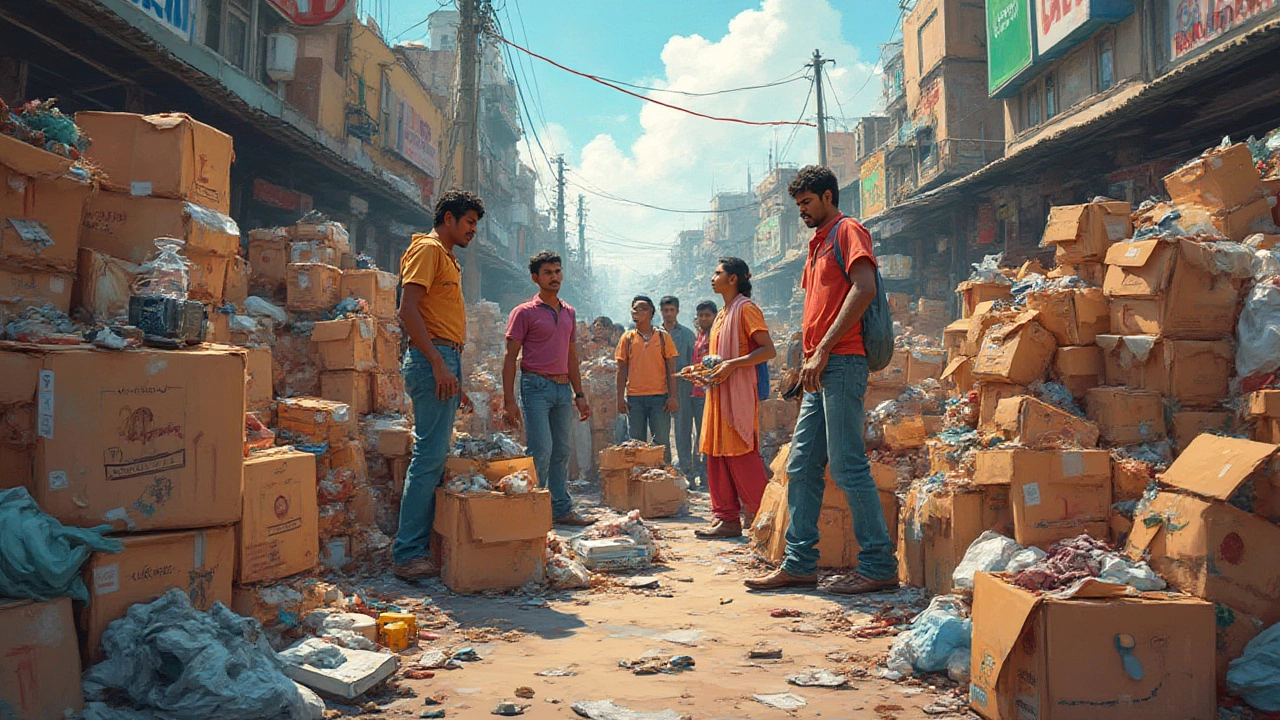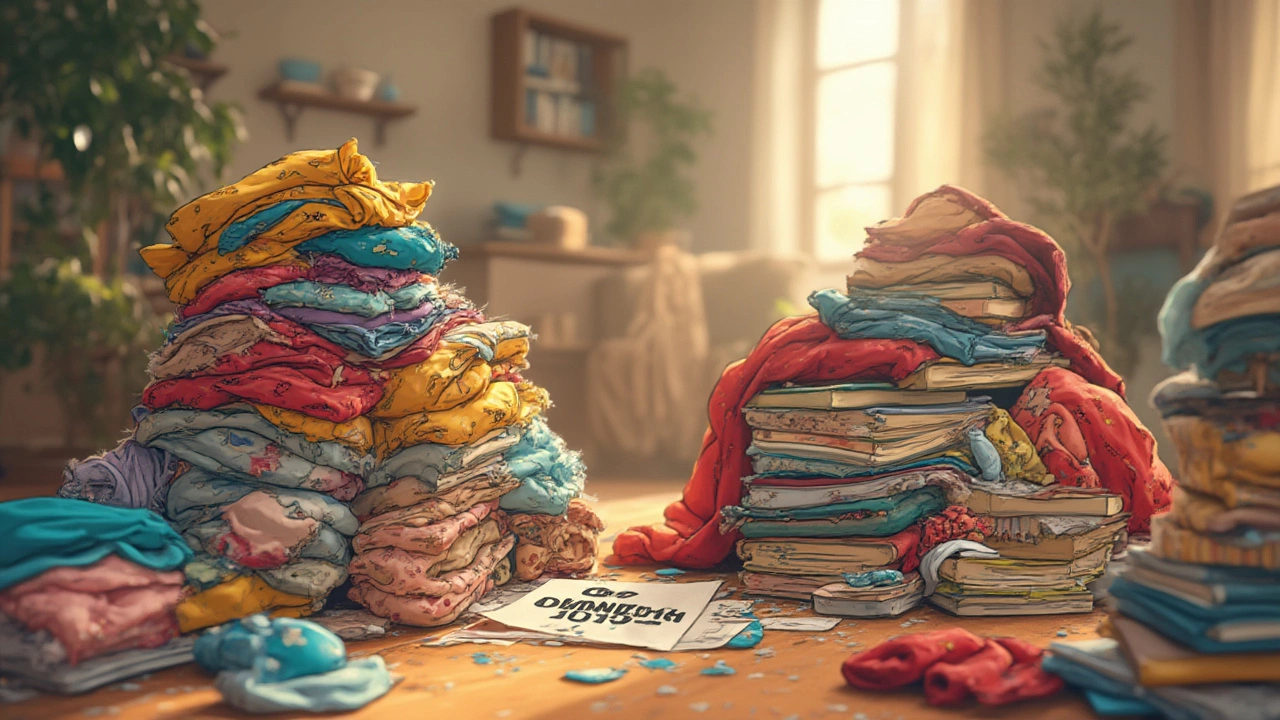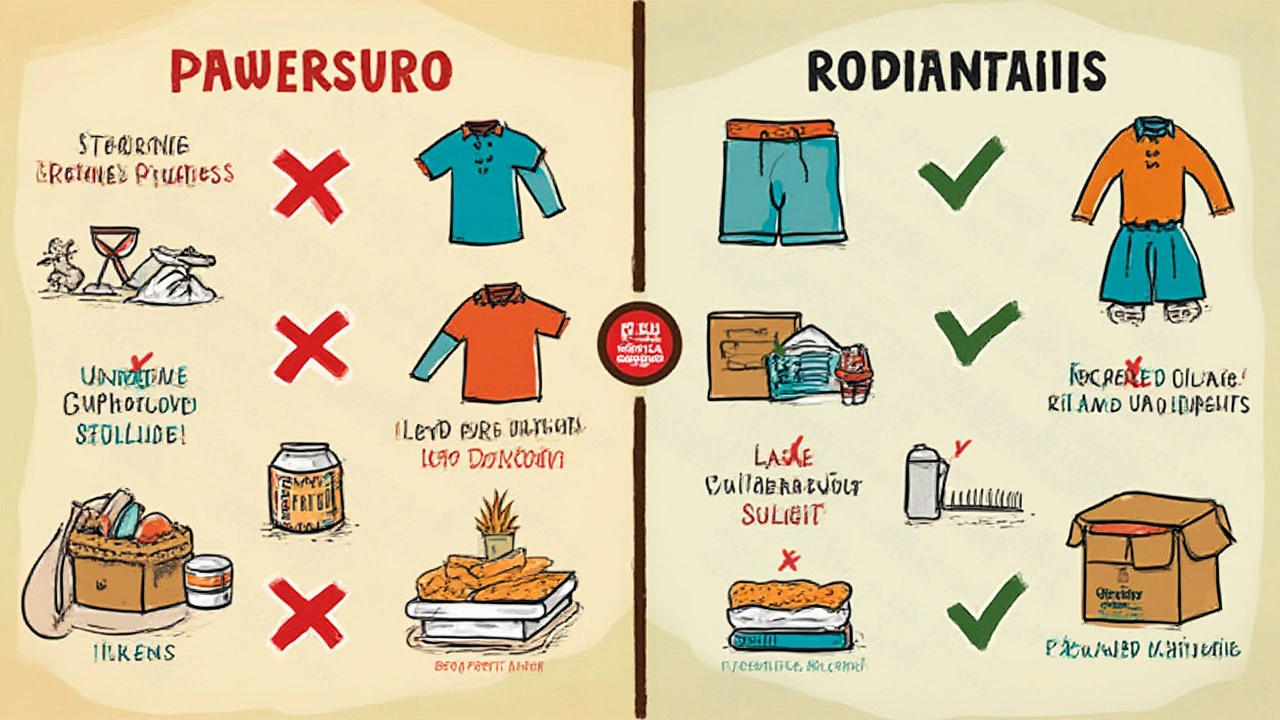Things You Should Never Donate to Charity: The Real Dos & Don’ts
 Jul, 24 2025
Jul, 24 2025
It’s tempting to haul everything from bursting closets and overflowing garages straight to the local charity drop-off. I get it—junking unwanted stuff feels like a win-win. Out with the clutter, in with the good deed. But that satisfaction can turn sour if your donation ends up costing charities money, resources, or even puts someone at risk. Ever watched a volunteer’s face drop as you unload a box of cracked food processors or that ancient tube TV? Not all gifts are a blessing. If you want your donations to help rather than harm, there are things you absolutely should keep out of those charity bins.
Why Not Everything is a Good Donation
When I first started cleaning out the house after Odessa outgrew her toddler years, I would bag every toy, book, and outfit she abandoned and shuttle them to the nearest charity shop. I figured everything could find a new home, right? Turns out, charities spend millions tossing away unusable donations each year. The Association of Charity Shops in the UK found that up to 7% of donations are instantly sent to landfills—costing charities an estimated £13 million annually. And that’s just the UK. In the US, Goodwill spent over $30 million on landfill fees back in 2021. That’s money straight out of the mouths of people who need it most.
The root problem is that people often confuse recycling with donating. That ancient computer monitor lurking in your storage room isn’t exactly a hot ticket item—most organizations simply can’t repair or safely pass on old electronics, mattresses, or broken furniture. Sometimes, well-meaning folks even drop off hazardous items: half-used paint cans, expired medicines, or old car seats, for example. Not only are these unusable, but they can be outright dangerous. And don’t get me started on heavily soiled clothes. You’d be amazed how many unwashed, stained, or even moldy items end up on charity’s doorsteps each month.
Charities are set up to distribute essentials, not to run landfills or recycling centers. When they get things they cannot use, they have to pay to dispose of them, which means less money and energy for their actual mission. All this wasted effort comes at the expense of volunteers’ time and even stretches the patience of kind-hearted staff. Not to mention, it can be demoralizing. After seeing a pile of unsellable junk, charity workers often say they feel like "dumping sites" instead of helpers.

The Worst Offenders: Stuff You Should Never Donate
If you’re unsure whether an item belongs in a donation bin or the trash, imagine you’re on the receiving end. Would you want it? If the answer is no, keep it out of the bag. Here’s a deep dive into the worst offenders:
- Broken or Unusable Electronics: Outdated TVs, computers, printers with missing cords, or appliances that don’t work are useless to charities. Environmental laws also ban some electronics from landfills, so these become a real headache. E-waste needs special handling; check for local recycling events instead.
- Mattresses and Bed Frames: These are almost always rejected due to hygiene and safety rules. Plus, there’s usually no way for a charity shop to determine if bedbugs, mold, or allergens are present. Even in perfect condition, very few organizations can accept them. The risk is just too high.
- Car Seats, Cribs, and Baby Equipment: Safety standards for kids’ gear change constantly. Most charities can’t guarantee the gear hasn’t been in an accident or hasn’t expired. One old car seat could do more harm than good.
- Used Underwear and Socks: That sounds obvious, but many organizations see bags full of these every week. Only donate these items if they are brand new, preferably in packaging. The same goes for bras, shapewear, or swimwear.
- Half-used Toiletries and Opened Food: Open bottles of shampoo, half-empty foundation, opened bags of snacks, and expired canned goods often turn up in donation boxes. Charities legally cannot distribute these for health and safety reasons.
- Heavily Soiled or Torn Clothing: If clothes have large stains, holes, or a lingering musty smell, they’re usually unsellable. Charity shops sometimes offer textile recycling, but most just pitch trashed clothes.
- Hazardous Materials: Paint, chemicals, motor oil, batteries, or cleaning products are never accepted. Not only are they dangerous, but regulations prevent charities from giving these to anyone.
- Pillows and Duvets: Even gently used, these harbor dust mites and allergens, and pose a public health risk. Only rarely will animal shelters accept these, and only if they’re freshly washed.
- Encyclopedias and Obsolete Textbooks: Libraries and schools rarely take them. Technology, information, and teaching standards have already moved on; nobody needs a 1980 World Book set.
- Holiday Decorations (Out of Season): After the season passes, charities may get flooded with unwanted décor they simply can’t sell or store for a year.
- Prescription Medication: Maybe this is obvious, but it still happens. Only police stations, some pharmacies, or medical waste programs should handle expired or unused meds.
The bottom line? Don’t give charities your garbage. If you wouldn’t pass an item to a friend or neighbor, don’t leave it for a stranger in need. Otherwise, you’re passing the cost of disposal onto organizations trying to help—hardly the spirit of giving.
| Item | Why Not Donate? |
|---|---|
| Broken electronics | Cannot be used or resold, expensive to dispose |
| Expired food or medicines | Illegal and dangerous for charities to distribute |
| Used underwear/socks | Unhygienic; most charities cannot give these out |
| Stained, ripped clothing | Unsellable and may end up in landfill |
| Old mattresses or pillows | Allergy/bedbug risks; most aren’t accepted |
| Hazardous materials | Illegal to accept; poses safety risks |
| Obsolete textbooks | No demand and hard to recycle or reuse |
Fun fact: The Goodwill website notes that about 80% of its inventory is sold, but the other 20%—largely composed of things like listed above—costs them millions each year in disposal fees. Meanwhile, Oxfam says cardboard boxes left out in the rain full of mildewed paperbacks or soggy sweaters can destroy entire shipments and contaminate other donations. That’s a double loss—lost goods and wasted sorting time!

How to Donate Well: Tips and Tricks
It’s not all doom and gloom. Charities love donations, but only when they’re genuinely useful. The trick is to put yourself in someone else’s shoes—not literally, unless you’re giving flip-flops, anyway. We’ve all got the urge to declutter, and there’s nothing wrong with that. But being a mindful giver just takes a few minutes longer and makes a world of difference to the person on the receiving end.
- Check Charity Requirements: Each charity is a little different. Browse their website or call before dropping off donations. Some post detailed lists of what they accept or provide donation “wish lists.”
- Wash or Clean Items: Dirty or musty smelling clothes and household goods just make more work for volunteers. Wash, wipe, or even iron clothes before donating them. If your kids—like my Conrad—have left stickers everywhere, pull those off before packing up the donation box.
- Package Properly: Secure lids, remove batteries, and pack fragile items carefully so they don’t break in transit. Use bags for shoes and elastic bands for cords—you’d be amazed how much this helps sorting rooms run smoothly.
- Donate in Season: Give winter coats when it’s getting cold, not in July. Donate school supplies pre-September. Out-of-season items take up precious storage space, and most shops can’t hold onto them for months on end.
- Essential Items Go First: The best things to give are practical: warm clothes, working kitchenware, unopened toiletries, diapers, and non-expired packaged food. Household basics are always in demand.
- Leave Sentiment at Home: Kids’ artwork, half-finished craft projects, or keepsakes that only Odessa and Conrad enjoyed aren’t going to have meaning for new owners. Don’t assume a charity shop is the right home for your emotional clutter.
- Don’t Overshare: More isn’t always better. For example, huge shipments of a single item—like 100 boxes of old fast food toys—often end up wasted unless arranged in advance for a specific group or event.
- Ask About Textile Recycling: Some places will take torn clothing or single shoes for recycling, but never assume. Call first or look for program details online.
- Think Local: If you see a call for donations after a disaster, pause to read the actual requests. Donating winter coats to a flooded Gulf Coast region makes no sense.
- Consider Giving Money: Sometimes, the most useful donation isn’t a thing, but a few dollars. This lets charities buy exactly what they need, when they need it.
Here’s a tip I learned the hard way: if you’re unsure, bring a small batch first. Ask staff on the spot if what you’re giving is useful. Most are happy to take a quick look and let you know if your donation helps or hinders.
Mistakes happen, but when you know better, you do better. Simple checks save charities thousands in disposal fees and give dignity back to the folks who need support. If you’re ever unsure about an item, chances are, it’s not a good fit for donation. And hey, recycling, Freecycle, and buy-nothing groups still offer ways to pass on weird or single-use stuff if you don’t want to send it to the dump.
Here’s the real win: every thoughtful gift, whether it’s a pristine winter coat or a small set of kitchenware, directly helps someone in your community. You make volunteers’ lives easier, avoid turning giving into a chore, and, best of all, you keep charities focused on what matters—not on sorting through someone else’s trash.
Next time you declutter, keep these tips close. You’ll be doing a solid for Odessa and Conrad’s generation, and everyone who counts on charity for a better break.